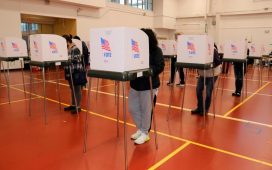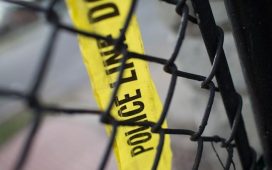For years, testing experts and regulators had looked at websites like RacehorseMeds and HorsePreRace and wondered about some of their most dramatically named products. Blood Building Explosion; White Lightning; Ice Explosion; Purple Pain – items with marketing as bright and attention-catching as the vibrant colors of the liquid inside the bottles had been a source of fascination for some time. Products that promised to “light one up” and that they “will not test” had no ingredients list, let alone a breakdown showing strengths of their active ingredients.
In her time at the Racing Medication and Testing Consortium, Dr. Mary Scollay said she had acquired bottles of these and other products from the two sites that later became part of the focus of FBI investigators. Rigorous testing had yielded mostly inactive ingredients, sugars, or harmless amino acids. Still, she had always wondered whether the makers of the substances were including some new, sinister form of performance enhancer that simply evaded even top-shelf testing.
Now, we know more about the instructions given to staff mixing up products at the direction of former pharmacist Scott Mangini, who had business involvement with both websites at various times. (Mangini was one of more than two dozen people indicted in March 2020 on drug adulteration and misbranding charges stemming from an alleged series of illegal doping rings in Thoroughbred and Standardbred racing.)
One of the final items filed by prosecutors just before Mangini’s sentencing on Sept. 10 included a cache of documents seized in FBI searches related to the investigation of RacehorseMeds and HorsePreRace. Included in the public filing was a series of formulas for some of the products sold by RacehorseMeds, as well as a series of invoices for orders of product ingredients sent from a supplier based in Wuhan, China. (There was also a set of billing records for RacehorseMeds, but that was filed under seal so is inaccessible to media or the public.)
We asked Scollay and former HFL Sport Science laboratory director Dr. Rick Sams to take a look at those records and help us understand what they mean about the products sold on these sites.
Harmless, or not?
Many of the substances listed on these (and other, similar websites) were clearly intended to appear as cheaper, knock-off versions of prescription drugs already in FDA-approved mass manufacture. Usually, those shared the same names as the prescription products (clenbuterol, omeprazole, flunixin, etc.) but were offered to lay people with no requirement they be licensed veterinarians. Those substances had their own problems, but it was at least clear what was supposed to be in them.
The mysterious substances with proprietary names had been more intriguing for regulators. Formulas revealed that many of them contained nothing different from more innocuously-named oral supplements – vitamins like pyridoxine (B6) and thiamine (B1), minerals like iron and copper salts, and amino acids like L-tryptophan. Many of these things can be found naturally in feed or hay, and Scollay says there’s no evidence that feeding extra of many of those ingredients produces any appreciable effect in a horse’s health, let alone performance. A product named Horse Power turns out to contain ATP, vitamins, amino acids, and di-isopropylamine dihydrochloride. It’s true that they would not test, but it wouldn’t be because they were magically hidden by masking agents; rather, they aren’t usually tested for post-race because those substances are probably present in most horses being fed balanced diets.
Under the cloak of “proprietary formulas,” the websites managed to charge much more for those pedestrian ingredients than what they would have cost horsemen who knew what they were buying. Red Explosion Blood Builder, for example, is still listed for sale online for $35 for a 10-milliliter bottle, but according to its formulation it only contained .002 grams of B12, water, and a couple of stabilizers. The B12, according to shipping records, was purchased for $8 per gram. A mark-up is just good business of course, but injectable B12 is available from legitimate, FDA-approved mass manufacturers for less than $6 for a 100-milliliter bottle.
Besides being expensive, some of the products may not have actually been capable of being absorbed by horses’ bodies, according to the formulas in the court filing. A product called TQ Explosion contained calcium levulinate, thiamine, tryptophan, and GABA.
“Calcium levulinate is a source of calcium,” said Sams. “Thiamine is a vitamin. Tryptophan is an essential amino acid. GABA is gamma aminobutyric acid and is prohibited. This product is made up in sterile water for injection instead of 0.9% sodium chloride so it may not be isotonic.”
The inclusion of salts is usually made in injectable formulas to ensure the solution is appropriately passed through the bloodstream. Blood cells are isotonic, meaning they naturally contain some salts. Pure water is naturally drawn in by salty solution, so exposure to pure water could make red blood cells swell and burst – that’s why most IVs are run with saline and not sterile water. Leaving out any kind of salt probably didn’t make the product risky to the horse, according to Sams, but it does mean it probably didn’t get delivered throughout the body in any sort of useful way.
Sometimes, the proprietary formulas left our expert sources scratching their heads as to what the makers thought they were accomplishing. The frighteningly-named Allergy Explosion turns out to contain only formic acid.
“Formic acid is the substance that causes the stinging sensation in ant bites,” said Sams. “I don’t think that injecting it in a horse is inhumane, but may lead the trainer to believe that it is doing something to excite the horse.”
Another product called Ozone contained nothing but food grade hydrogen peroxide in water. The “food grade” designation is unsettling to laboratory experts because it means the ingredient has not been created with sufficient purity to be safe for use in medication, let alone an injectable formula.
“Although hydrogen peroxide injections of people have been reported, it is not an approved therapy,” said Sams. “I wondered about the source of the hydrogen peroxide and its strength and purity as well as its stability in the injection vial and whether the peroxide interacted with the vial septum. All of these need to be addressed and answered before the product can be assumed to be safe for administration to horses. Mangini’s company did not report conducting any of these studies.”
[Story Continues Below]
A few of the proprietary products may have kicked up a few interesting results on Google had their ingredient lists been made available at the time of purchase, but were probably still bunk.
“As I recall, the Purple Pain was to be administered intravenously, so while there is evidence that ammonium sulfate will interrupt nerve conduction—when injected adjacent to a nerve—there’s nothing to suggest that systemic administration would have any effect on pain,” said Scollay. “There is some speculative stuff about L-isoleucine and d-phenylalanine [both found in a formula called Adrenal Cortex] exerting analgesic effects, most of the credible sites said there was no legitimate evidence for that claim.”
Just because it seems like a lot of this stuff didn’t work didn’t mean it was a harmless waste of money for the trainers who may have been buying it. While it’s not uncommon for legitimate pharmacies and pharmaceutical companies to import ingredients from China and elsewhere, there are varying standards to which those products can be held. Shipping receipts seized from Mangini showed that many of the ingredients he purchased were lacking a USP designation after their names. USP stands for United States Pharmacopeia, which is an organization that sets quality, purity, strength, and identity standards for raw ingredients. Imported ingredients with this designation have been verified to meet USP standards.
Several products were listed on shipping receipts as being less than 100% in purity – a no-no for reputable compounders to put in injectable products.
“The 98% pure claims make my skin crawl. That other 2% can be a killer—literally,” said Scollay.
Not only were many ingredients lacking this seal of approval, Scollay and Sams point out there were a few which contained dyes or colorings to make them appear an appealing color that would match the marketing name given to them. Blast Off Yellow contained yellow food coloring which, of course, isn’t intended to be injected into the veins of an animal. It remains unknown what, if any, side effects this could have.
There also isn’t a lot of detail provided in the instruction sheets on filtration, which would be a key step in making an injectable formula, though it’s possible there were additional instructions on filtration provided in documentation not attached to prosecutors’ exhibits. We do know that sanitary conditions in Mangini’s facility were lacking – state health inspectors discovered his pharmacy had no working sink for people to wash their hands before compounding drugs and the areas where drugs were made were filthy. They also found that there were no quality assurance tests taking place to check for sterility or endotoxin contamination of products like this one.
Read more about Mangini’s pharmacy in this 2016 report.
Then there were the instructions to make ITTP, which is supposed to be expensive to produce, even for much more technically advanced laboratories than Scott Mangini’s. Scollay couldn’t decide whether the instructions for making that product were more “hilarious or horrifying.”
“Take a bottle of water under the hood, open it,” read the single page of instructions. “Pour 100 ml into one beaker, 100 ml into another. Put 10 g of calcium ball things in one beaker, put 37.5 ittp in the other. Ph the ittp to 7.5. Pour them back into the bottle that has remained under the hood. Shake, it’s great. No filter. Yay we are done.”
“I’ll say ‘c’—all of the above,” said Scollay when considering how she viewed those instructions. “In case there would be any question about the credibility of the laboratory, or how seriously it undertook its tasks—this certainly doesn’t read like the business model of a good guy just trying to make good medicine more affordable. Unless the good guys were the writers at the National Lampoon.”
The heavy hitters
There were substances in the shipping receipts that gave Sams pause. There were some that were intended to be knockoffs of legitimate drugs, and others that were more sinister.
“The products containing dexamethasone, omeprazole, clenbuterol, flunixin, phenylbutazone, and toltrazuril are all generic knockoffs of prescription products,” Sams said. “The FDA requires generic products to be manufactured in FDA-approved facilities according to Good Manufacturing Practices standards. Mangini’s operation could not have met these standards. Furthermore, the preparation of knockoff products in bulk as he was doing does not meet the definition of “compounding”.
“The remaining products contain clearly prohibited and performance-enhancing substances such as selective androgen receptor modulating drugs (SARMs) and others. I include injectable clenbuterol in this group because it is not an approved drug in the U.S. Although all of these substances are prohibited in horse racing, they are not DEA controlled substances so no DEA violations occurred.”
Given the manufacturing conditions in Mangini’s lab, Sams said veterinarians and trainers could not have relied on the labeled concentrations to be accurate enough to comply with testing thresholds established by state commissions – because those thresholds were created based on the FDA approved versions of the drugs.
The SARMs that attracted the most attention from prosecutors went into a product called Ostarine MK-2866 Oral Solution. Its label promised “Ostarine MK-2866 is in the class of Selective Androgen Receptor Modulators or SARMs. SARMs offer the benefits of traditional anabolic adrogenic steroids such as testosterone, including increased muscle mass, fat loss, and bone density.”
The label also indicated the drug had a 24-hour half life, which would give a user information about how to evade testing.
“Ostarine is extensively metabolized so administration studies had to be performed in order to identify metabolites to facilitate its detection in blood and urine because orally administered ostarine is subject to substantial first-pass effects,” said Sams. “This is a drug of ongoing concern in racing and, in my opinion, is one of the more egregious violations in the Mangini document.”
Other invoices include “Cardanine,” which appears to be a misspelled version of cardarine and Antibolicum LGD4033, which is also a type of SARMs drug. They also reveal the shipment of ITPP, a prohibited substance believed to increase the oxygen-carrying ability of red blood cells. Di-isopropyl diacetate, or pangamic acid, is also among the orders and is also a prohibited substance.
Scollay thought it notable that several products – both knockoffs and proprietary formulas seemed to be reliant on the inclusion of a common thyroid drug.
“Interesting that the Light Explosion and Green Speed contain levothyroxine as their primary ingredient—just in case anyone didn’t think it was being used to impact performance,” she said.
L-thyroxine is sold under various trade names, including Thyro-L and Levo-Powder, and was the subject of much concern several years ago, when California regulators discovered that trainer Bob Baffert was giving the substance to all his horses as a feed additive, whether or not they’d been diagnosed with thyroid problems. It remained a topic of concern due to its association with cobalt administration.
Read previous reporting about l-thyroxine here.
Mangini’s response
To the extent Mangini responded to some of these issues in court, he maintained that the majority of his sales came from knockoffs of existing drugs like omeprazole (which he was warned by the FDA to stop mass manufacturing). Ostarine, he said, accounted for .5% of his overall sales. Blood Building Explosion, which contained cobalt, was .4% of sales, while Horse Power was .65% of sales.
At sentencing, prosecutors pointed out that the only reference they have to verify Mangini’s account of his sales are the records he kept.
“This is not a company that has produced anything remotely like a wholesome breakdown of its finances,” remarked U.S. Attorney Andrew Adams.
Regardless of Mangini’s assertion that he didn’t actually sell many of the problematic products on offer, Adams pointed out that each bottle of Blood Building Explosion contained many doses, so even the sale of dozens of bottles really resulted in hundreds of doses going into horses pre-race.
For his part, Mangini and his attorney said the former pharmacist was mostly “hurt” by the suggestion that his products were intended to corrupt the industry he loved so much.
“It was wrong to have this internet site and run the pharmacy the way he ran it,” said Mangini’s attorney, William Harrington. “He’s pled guilty to that. But to suggest that what he’s really been doing was to create dozens of products to abuse animals, I just don’t support that.”
New to the Paulick Report? Click here to sign up for our daily email newsletter to keep up on this and other stories happening in the Thoroughbred industry.
Copyright © 2021 Paulick Report.









